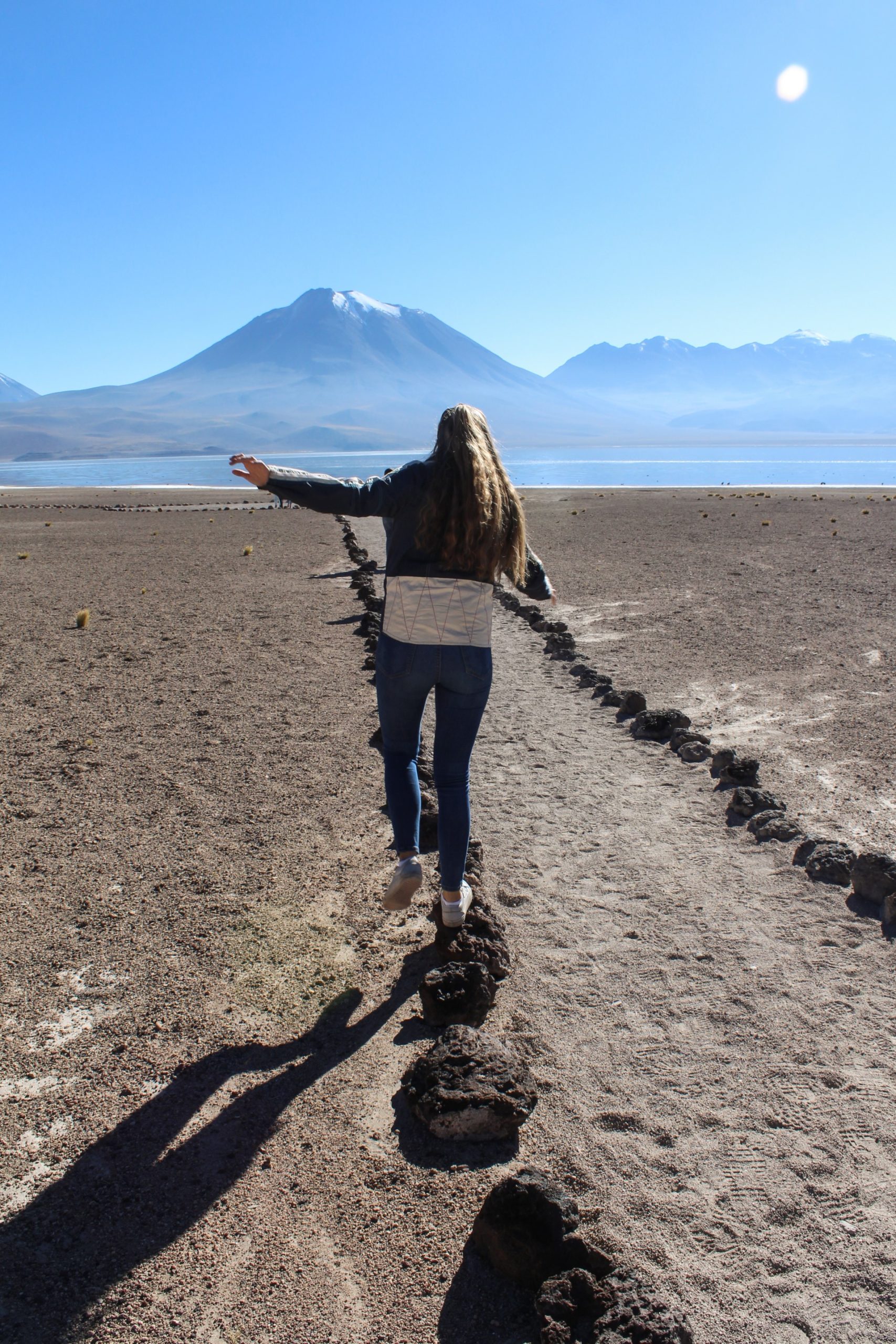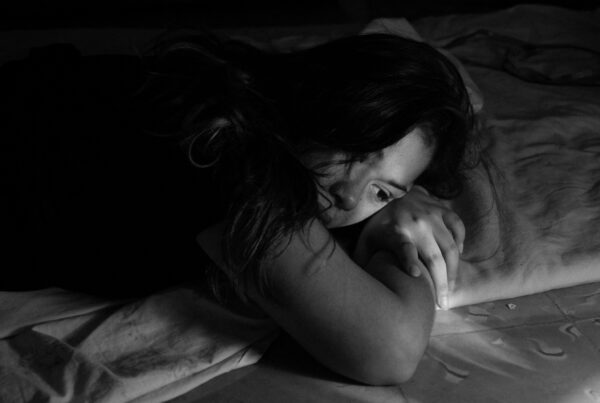
Attitudes towards travelling and taking a gap year have undergone an interesting change: Instead of being something for the dropouts and the lost, it is now a popular choice for anyone at crossroads in life. But what exactly are people looking for when exploring the world? And, more importantly, what do they bring back?
Attitudes towards travelling and taking a gap year have undergone an interesting change: Instead of being something for the dropouts and the lost, it is now a popular choice for anyone at crossroads in life. But what exactly are people looking for when exploring the world? And, more importantly, what do they bring back?

Photo by Ann-Kathrin Arui

Photo by Ann-Kathrin Arui
“You know, this really reminds me of that time in my gap yaaah, when I was in Paraah… Paraah, darling, Paraah… Peru!” If this quotation does not immediately ring a bell, I beg you to witness this unique piece of culture from 2010 to set the mood for this article. The video is an excruciatingly accurate parody of a British middle-class boy on a gap year who is recounting more or less funny moments and deep insights from his time in Tanzania, Peru, and Myanmar. This persona successfully elicits the same feeling of cringe in every watcher – either because they know someone who speaks about their travels like this, or even more painful, they recognise themselves in it*. But how has the great virtue of travelling and intercultural exchange become the target of parody? Why is it possible to create such an obnoxious persona of the gap-year-taker with so many people relating to it?
It seems that especially in affluent Western circles, travelling the world and finding oneself during a gap year has become an almost necessary rite of passage before entering higher education. Having travelled places all over the world could almost be described as a currency, a status symbol. It shows that the need to impress somehow still exists but has shifted from materialistic “stuff” to authentic and adventurous travel experiences (Fitzsimmons, 2019). Interestingly, the narrative always surrounds the self-description as traveller, sometimes backpacker, but rarely ever simply as tourist. This terminology strongly relates to the expected behaviour and values of the person in a foreign country – while the traveller seems to explore in a slower, more flexible and conscious manner, the backpacker is often associated with shorter stops, visiting as many countries in as little time as possible, and excessive partying in hostels (O’Reilly, 2005). Nevertheless, both types want to be clearly set apart from the tourist who will always remain tangled up in all-inclusive offers and hotel jacuzzis, unable to make authentic, local connections and uninterested in experiencing true culture. This is an interesting paradox, as both travellers and backpackers seem to agree that authenticity can only be found in the exotic, the “other”, far away from modern life and their realities at home. Funnily enough, many of them will remain among themselves even on the other side of the globe: a volatile diaspora of the typically middle-class, educated, single Westerner at a junction in life – as described by field researchers (O’Reilly, 2005), gap year statistics (Crawford & Cribb, 2012), and obviously gap-yah-guy.
Yet, many of the gap-year-takers leave home to turn to themselves, searching for answers about their values, attitudes, and identities. Research shows that the gap year is such a popular option before entering university because it promises time and space for trying out alternative selves, forming one’s identity, and gaining maturity and independence (Crawford & Cribb, 2012; King, 2011). In fact, travellers develop their abilities such as communication and problem-solving, learning a new language or management skills. They also learn to self-regulate their emotions, often confirm or challenge their worldviews, and become more conscious of themselves and their identity (Chen et al., 2019). And indeed, young people who take a gap year do not drop out of the conventional career path as is sometimes suggested. The vast majority proceed to their higher education exactly as planned and even outperform their peers who went straight to university (Crawford & Cribb, 2012; The School of the New York Times, 2020). This is an important observation, as it aligns perfectly with the predictions of the self-determination theory: Individuals seek to explore and master their surroundings, and if allowed to do so, they will satisfy their innate psychological needs and show enhanced motivation and well-being (Ryan & Deci, 2000). Later in life, this makes gap-year-takers not only successful graduates, but also very interesting candidates on the job market – as many of them consciously note (King, 2011; Lyons et al., 2012).
“What makes and breaks status now is not the ownership of an item, but the access to such experiences.”
As travelling shifts from being an activity for dropouts, deviants, and hippies to being a career-enhancing status symbol, a whole new market has emerged. It is possible to buy backpacker itineraries and experience packages – companies sell authentic three-week-long volunteering projects to the masses, hostels all over the world elevate their cheap dorms to minimalist, bamboo-heavy designs adorned with lots of monstera deliciosas. At this point, the market mirrors structures of class as many of these experiences now come at a price – making them less accessible. At the same time, it can exaggerate hierarchies and reinforce stereotypes between the volunteering and host nations, usually best described as a global north versus south divide (Lyons et al., 2012). While travelling, cultural exchange and volunteering might originally stem from the idea of removing oneself from a neoliberal environment to explore alternative views on life, it has now become another mechanism that supports such structures by selling these experiences to the ‘rich’ and rebranding them as career-furthering, nowadays maybe even essential skills and experiences (Lyons et al., 2012).
There remains one problem with these experiences as the new status symbol: You cannot wear them and show them off like you can with an expensive watch. What now makes and breaks status now is not the ownership of an item, but the access to such experiences (Fitzsimmons, 2019). This creates the need to make them visible and tangible so that we can communicate to the world that we have this access, we are part of the cosmopolitan, self-actualised elite (Andjelic, 2018). Instagram, for example, is great for this. Posts and stories help to create a narrative around travelling and exploring, basically showing tangible proof of what one has seen and experienced, or which kids one has taught or helped. The traveller’s lifestyle is distilled into a specific aesthetic, even lifestyle and food choices, and into the unmistakable way of speaking about one’s experiences. This might explain why we cringe at acai bowls served in coconut shells, loose trousers with elephant prints, and of course, gap-yah-guy.
Undeniably, the backpacking world has changed and could therefore provide us with such a fantastic piece of comedy. Nevertheless, the conclusion of this article should not be: Let’s stop doing this (also because that wouldn’t be possible). It is more important to understand what drives this phenomenon, who gains and who loses in this situation, and how much we want to be part of it. It seems paradoxical that Generation Gap Yah is also Generation Fridays for Future, Generation Post-Colonialism, and Generation Post-Capitalism. But is it really? Maybe travelling is essential to create awareness for these topics, to see and experience the consequences of our behaviour. Maybe, the travellers and gap-year-takers are one more piece of the puzzle to eventually help to create confident, reflected, and tolerant citizens of the world. <<
* Note of author: To be fully transparent, I am one of them – just look at the picture! I am balancing on rocks in the Atacama Desert in Chile during my gap year in 2017. I have travelled a lot more since then, stayed in hostels and went to backpacker parties, and I have certainly posted cringe-y things on my Instagram profile. I believe that my style of travelling has changed over the years, and I have become a lot more conscious of it, but this article is also a way of being brutally honest with myself and a little self-ironic, too.
References
-
Andjelic, A. (2018). Inner journeys are the new luxury travel & what it means for the market for status symbols. https://andjelicaaa.medium.com/inner-journeys-are-the-new-luxury-travel-what-it-means-for-the-market-for-status-symbols-b8387ef163af
-
Chen, G., Huang, S., & Hu, X. (2019). Backpacker personal development, generalized self-efficacy, and self-esteem: Testing a structural model. Journal of Travel Research, 58(4), 680-694.
-
Crawford, C., & Cribb, J. (2012). Gap year takers: uptake, trends and long-term outcomes. Institute for Fiscal Studies through the Centre for Analysis of Youth Transitions (CAYT). London: Department for Education.
-
Fitzsimmons, A. (2019). How travel became the new designer bag. https://www.wework.com/ideas/professional-development/creativity-culture/how-travel-became-the-new-designer-bag
-
King, A. (2011). Minding the gap? Young people’s accounts of taking a Gap Year as a form of identity work in higher education. Journal of Youth Studies, 14(3), 341-357.
-
O’Reilly, C. C. (2005). Tourist or traveller? Narrating backpacker identity. Discourse, communication and tourism, 150-169.
-
Ryan, R. M., & Deci, E. L. (2000). Self-determination theory and the facilitation of intrinsic motivation, social development, and well-being. American Psychologist, 55(1), 68–78. https://doi.org/10.1037/0003-066X.55.1.68
-
The School of the New York Times (2020). Gen Z and the Gap Year Movement. https://nytedu.com/blog/gen-z-and-the-gap-year-movement/
“You know, this really reminds me of that time in my gap yaaah, when I was in Paraah… Paraah, darling, Paraah… Peru!” If this quotation does not immediately ring a bell, I beg you to witness this unique piece of culture from 2010 to set the mood for this article. The video is an excruciatingly accurate parody of a British middle-class boy on a gap year who is recounting more or less funny moments and deep insights from his time in Tanzania, Peru, and Myanmar. This persona successfully elicits the same feeling of cringe in every watcher – either because they know someone who speaks about their travels like this, or even more painful, they recognise themselves in it*. But how has the great virtue of travelling and intercultural exchange become the target of parody? Why is it possible to create such an obnoxious persona of the gap-year-taker with so many people relating to it?
It seems that especially in affluent Western circles, travelling the world and finding oneself during a gap year has become an almost necessary rite of passage before entering higher education. Having travelled places all over the world could almost be described as a currency, a status symbol. It shows that the need to impress somehow still exists but has shifted from materialistic “stuff” to authentic and adventurous travel experiences (Fitzsimmons, 2019). Interestingly, the narrative always surrounds the self-description as traveller, sometimes backpacker, but rarely ever simply as tourist. This terminology strongly relates to the expected behaviour and values of the person in a foreign country – while the traveller seems to explore in a slower, more flexible and conscious manner, the backpacker is often associated with shorter stops, visiting as many countries in as little time as possible, and excessive partying in hostels (O’Reilly, 2005). Nevertheless, both types want to be clearly set apart from the tourist who will always remain tangled up in all-inclusive offers and hotel jacuzzis, unable to make authentic, local connections and uninterested in experiencing true culture. This is an interesting paradox, as both travellers and backpackers seem to agree that authenticity can only be found in the exotic, the “other”, far away from modern life and their realities at home. Funnily enough, many of them will remain among themselves even on the other side of the globe: a volatile diaspora of the typically middle-class, educated, single Westerner at a junction in life – as described by field researchers (O’Reilly, 2005), gap year statistics (Crawford & Cribb, 2012), and obviously gap-yah-guy.
Yet, many of the gap-year-takers leave home to turn to themselves, searching for answers about their values, attitudes, and identities. Research shows that the gap year is such a popular option before entering university because it promises time and space for trying out alternative selves, forming one’s identity, and gaining maturity and independence (Crawford & Cribb, 2012; King, 2011). In fact, travellers develop their abilities such as communication and problem-solving, learning a new language or management skills. They also learn to self-regulate their emotions, often confirm or challenge their worldviews, and become more conscious of themselves and their identity (Chen et al., 2019). And indeed, young people who take a gap year do not drop out of the conventional career path as is sometimes suggested. The vast majority proceed to their higher education exactly as planned and even outperform their peers who went straight to university (Crawford & Cribb, 2012; The School of the New York Times, 2020). This is an important observation, as it aligns perfectly with the predictions of the self-determination theory: Individuals seek to explore and master their surroundings, and if allowed to do so, they will satisfy their innate psychological needs and show enhanced motivation and well-being (Ryan & Deci, 2000). Later in life, this makes gap-year-takers not only successful graduates, but also very interesting candidates on the job market – as many of them consciously note (King, 2011; Lyons et al., 2012).
“What makes and breaks status now is not the ownership of an item, but the access to such experiences.”
As travelling shifts from being an activity for dropouts, deviants, and hippies to being a career-enhancing status symbol, a whole new market has emerged. It is possible to buy backpacker itineraries and experience packages – companies sell authentic three-week-long volunteering projects to the masses, hostels all over the world elevate their cheap dorms to minimalist, bamboo-heavy designs adorned with lots of monstera deliciosas. At this point, the market mirrors structures of class as many of these experiences now come at a price – making them less accessible. At the same time, it can exaggerate hierarchies and reinforce stereotypes between the volunteering and host nations, usually best described as a global north versus south divide (Lyons et al., 2012). While travelling, cultural exchange and volunteering might originally stem from the idea of removing oneself from a neoliberal environment to explore alternative views on life, it has now become another mechanism that supports such structures by selling these experiences to the ‘rich’ and rebranding them as career-furthering, nowadays maybe even essential skills and experiences (Lyons et al., 2012).
There remains one problem with these experiences as the new status symbol: You cannot wear them and show them off like you can with an expensive watch. What now makes and breaks status now is not the ownership of an item, but the access to such experiences (Fitzsimmons, 2019). This creates the need to make them visible and tangible so that we can communicate to the world that we have this access, we are part of the cosmopolitan, self-actualised elite (Andjelic, 2018). Instagram, for example, is great for this. Posts and stories help to create a narrative around travelling and exploring, basically showing tangible proof of what one has seen and experienced, or which kids one has taught or helped. The traveller’s lifestyle is distilled into a specific aesthetic, even lifestyle and food choices, and into the unmistakable way of speaking about one’s experiences. This might explain why we cringe at acai bowls served in coconut shells, loose trousers with elephant prints, and of course, gap-yah-guy.
Undeniably, the backpacking world has changed and could therefore provide us with such a fantastic piece of comedy. Nevertheless, the conclusion of this article should not be: Let’s stop doing this (also because that wouldn’t be possible). It is more important to understand what drives this phenomenon, who gains and who loses in this situation, and how much we want to be part of it. It seems paradoxical that Generation Gap Yah is also Generation Fridays for Future, Generation Post-Colonialism, and Generation Post-Capitalism. But is it really? Maybe travelling is essential to create awareness for these topics, to see and experience the consequences of our behaviour. Maybe, the travellers and gap-year-takers are one more piece of the puzzle to eventually help to create confident, reflected, and tolerant citizens of the world. <<
* Note of author: To be fully transparent, I am one of them – just look at the picture! I am balancing on rocks in the Atacama Desert in Chile during my gap year in 2017. I have travelled a lot more since then, stayed in hostels and went to backpacker parties, and I have certainly posted cringe-y things on my Instagram profile. I believe that my style of travelling has changed over the years, and I have become a lot more conscious of it, but this article is also a way of being brutally honest with myself and a little self-ironic, too.
References
-
Andjelic, A. (2018). Inner journeys are the new luxury travel & what it means for the market for status symbols. https://andjelicaaa.medium.com/inner-journeys-are-the-new-luxury-travel-what-it-means-for-the-market-for-status-symbols-b8387ef163af
-
Chen, G., Huang, S., & Hu, X. (2019). Backpacker personal development, generalized self-efficacy, and self-esteem: Testing a structural model. Journal of Travel Research, 58(4), 680-694.
-
Crawford, C., & Cribb, J. (2012). Gap year takers: uptake, trends and long-term outcomes. Institute for Fiscal Studies through the Centre for Analysis of Youth Transitions (CAYT). London: Department for Education.
-
Fitzsimmons, A. (2019). How travel became the new designer bag. https://www.wework.com/ideas/professional-development/creativity-culture/how-travel-became-the-new-designer-bag
-
King, A. (2011). Minding the gap? Young people’s accounts of taking a Gap Year as a form of identity work in higher education. Journal of Youth Studies, 14(3), 341-357.
-
O’Reilly, C. C. (2005). Tourist or traveller? Narrating backpacker identity. Discourse, communication and tourism, 150-169.
-
Ryan, R. M., & Deci, E. L. (2000). Self-determination theory and the facilitation of intrinsic motivation, social development, and well-being. American Psychologist, 55(1), 68–78. https://doi.org/10.1037/0003-066X.55.1.68
-
The School of the New York Times (2020). Gen Z and the Gap Year Movement. https://nytedu.com/blog/gen-z-and-the-gap-year-movement/



